2015 Nissan Pathfinder 4×4 Review (With Video)

Nissan’s path to the modern Pathfinder has been long and wandering. In 1985 the 2-door truck based Pathfinder was the answer to Chevy’s Blazer and Ford’s Bronco. In 1995 Nissan changed absolutely everything and made the Pathfinder a 5-door unibody SUV to compete head-on with Jeep’s successful Grand Cherokee. Nine years later, Nissan started over, yet again, with a body-on-frame design to do battle with the myriad of General Motors midsize SUVs choking up suburban expressways. Then, in 2013, Nissan went back to the drawing board for a fourth time with a new mission: build a spacious and well-priced soft-roader to battle the new Explorer and the GM Lambda platform triplets (Acadia, Traverse, Enclave).
Exterior
Before we dive deep into the Pathfinder, we have to identify this breed’s natural habitat, and that means forgetting every Pathfinder that came before. While you’ll still find WD21 Pathfinders climbing rocks, this Pathfinder is more at home on the school run. I mentioned GM’s Lambda CUVs earlier because this Pathfinder is big. Really big. That means the Pathfinder isn’t the most direct competitor to entries like the Kia Sorento that’s more than a foot smaller or even the Toyota Highlander that is 6 inches shorter. The mission of the Sorento and Highlander is to carry 4-5 adults in comfort while providing a third row for children, mothers-in-law or emergencies. The Pathfinder however was intended to carry 7 adults in relative comfort.
Because the new Pathfinder’s mission is people hauling, not rock climbing, you won’t find aggressive approach and departure angles on the nose and rump. Instead, we get slab sides, a variant of Nissan’s truck grille up front and a rather vertical hatch in the back. The overall look is simple and clean but lacks the excitement (yes, I used that word in a CUV review) you’d find in entries like the new Sorento.
Interior
The Pathfinder sports the most combined legroom in this segment (1st row + 2nd row + 3rd row) and combined legroom is important. Other entries claim to have more third row legroom (like the Traverse), but if the other two rows are cramped, you end up sliding those seats back cutting down on the room left in the mother-in-law-row. Looking deeper, the Traverse claims 3.4 inches more 3rd row room but you’ll find that the Chevy’s 1st row is 1 inch smaller and the middle row is 5 inches smaller. This means with the driver’s seat adjusted ideally for me at 6-feet tall (not giving a toss about the folks in the back) I can adjust the second row seat to have 2-3 inches of leg room and have a similar 2-3 inches of legroom in the third row of the Pathfinder as well. I’m a little surprised Nissan chose not to make an 8-passenger version of the Pathfinder because the 3rd row is as accommodating as the Highlander’s 3-seat rear bench. Speaking of the Highlander, you’ll notice upper trims come only with captains chairs in the middle row, meaning passenger number five has to sit in the cramped third row.
The second reason to buy a Pathfinder is for the trick second row seat. If you’re a parent with two or three child seats in the middle row, you’ll appreciate that Nissan designed the 40% section of the bench to contort in a way that allows adults to get in to the third row. While it is possible to get into the back in other 3-row vehicles with a child seat in the middle, it isn’t easy.
Legroom isn’t everything, of course, so Nissan kept the roofline high at the rear of the Pathfinder giving a generous 37.8 inches of 3rd row headroom. If you want this kind of room without a Nissan logo on the hood, you’ll be looking at full-size SUVs. I am talking Suburban-sized since the Tahoe actually offers 6 inches less total legroom than the Pathfinder. If you need something bigger than that, you’re in Blue Bird bus territory.
The Pathfinder’s generous legroom comes at a price: the small cargo area. Admittedly, the 16 cubic feet of space behind the last row is 1 more than you get in the Tahoe, but it’s 8 less than the Traverse and 23 less than the Suburban. So, while the Pathfinder is as accommodating as a Suburban for 7 adults, you can’t fit 7 suitcases in the back.
Also on the down side is a cabin that’s starting to show its age. The seats are class leading in terms of comfort, but the cabin is full of hard plastics. I’m not one to bash hard plastics off-hand, but casting the primary dashboard touch points out of hard plastic is unusual in this segment and it makes entries like the Durango, Sorento and Enclave look and feel more premium.
Infotainment
Although the Pathfinder isn’t that old, the base “S” trim gets you a 6-speaker audio system and in-dash 6-CD changer … and that’s it. No Bluetooth, no AUX input and no USB/iPod interface. If you want those, you have to step up to the $32,990 SV trim which includes a 7-inch infotainment LCD. Although I dislike the stripper trim concept, you should know the SV is still about $2,000 less than a comparable Highlander. (Keep in mind Toyota’s base model lacks a V6.) SL Tech trims get an 8-inch infotainment display and the same 13-speaker Bose sound system as the Infiniti QX60. At $38,090, it’s also the cheapest way to get navigation. Any way you slice it, however, Nissan’s infotainment options are a step behind the new entries like the Sorento, Highlander, Durango and 2016 Pilot.
On the up-side, Nissan’s touchscreen infotainment system was one of my favorites last decade, so in terms of functionality it fares quite well. GM’s Lambda SUVs all get small infotainment screens set low in the dashboard due to the age of the platforms and, interestingly, a Traverse with navigation is just $250 less. On the down-side, the Pathfinder is at least five years behind the rest, especially compared to Toyota and Chrysler’s latest systems. GM’s refreshed infotainment options in the Lambda CUVs operate on a smaller 6.5-inch screen but look more modern.
Drivetrain
Under the hood lies Nissan’s ubiquitous 3.5-liter V6 tuned to 260 horsepower and 240 lb-ft of torque, 5 hp and 8 lb-ft less than the same engine in the QX60. In addition to being down a few ponies compared to its luxury cousin, it’s also the least powerful in its class. As you would expect from Nissan, power is sent to the front wheels via a CVT, but this one has been revised to handle a 5,000 lb tow rating. The new transmission uses a steel chain instead of a steel belt for durability, but importantly the ratios stay more-or-less unchanged. Nissan’s reps confirmed the transmission is the primary reason for the QX60 and Pathfinder’s different tow ratings.
If towing with a FWD crossover doesn’t sound like fun, $1,690 buys you AWD. The system normally defaults to FWD mode for improved fuel economy but as a (small) nod to the Pathfinder’s history, the system has a lock mode mechanically connecting the front and rear differentials so power flows 50:50 (front:rear). Unlike more traditional transfer case setups, the clutch-pack allows a small amount of slip so the system can be used on dry pavement without binding. Leaving the AWD system in “Auto” keeps power to the front unless fairly significant slippage occurs (in order to improve fuel economy).
Drive
The Pathfinder is loosely based on Nissan’s D-Platform which underpins the Altima, Murano and the last generation Maxima. One thing all those vehicles have in common is being light for their category and that’s true of the Pathfinder as well. At 4,317 lbs in FWD trim and topping out at 4,506 in AWD trim, that’s about the same weight as Toyota’s Highlander V6 and 300-500 lbs lighter than a comparable GM crossover. The weight reduction and other efficiency differences pay dividends with real world fuel economy in the AWD model coming in around 21.5 MPG in mixed driving. That’s around 11 percent better than the Traverse, 15 percent better than the Enclave and 18 percent better than the Tahoe on my same fuel economy route. While a few MPG doesn’t sound like much, at this end of the scale it equates to $450 lower annual fuel bills vs the Buick.
The comparatively light curb weight and CVT compensate for the lower torque numbers and allowed our tester to scoot to 60 in 7.1 seconds. While not the fastest in the pack, this is better than the majority of three row crossovers on the market. This is despite the CVT’s final drive ratio being tuned toward fuel economy. The CVT’s main benefit is it allows the engine to hang out at the peak of its power band for maximum acceleration. For 2015, Nissan programmed the CVT to imitate a traditional stepped automatic when in “D.” Not surprisingly this results in lower performance because it negates the major benefit of a CVT in the first place and actually causes a 2/10th longer run to 60 (7.3 seconds) than when the transmission is in “L” and ditches the imitation shifts.
Everything has a trade off and so it is with the Pathfinder. The CVT’s low ratio isn’t terribly low at 13.5:1 (low gear and final drive), this doesn’t compare all that well with the lower 15.2:1 that you find in the Ford Explorer and higher overall than basically all the competition. This tall starting ratio conspires with the soft springs and compliant sway bars to make the Pathfinder feel about 1,000 lbs heavier on the road. In the stop-light races, most of the competition will beat the Pathfinder to 30 mph because of that ratio choice. Past 30, the Pathfinder picks up steam and may win the race overall, but in the real world that 0-30 time is more important.
More than most new cars, we have to separate lateral grip from handling “feel” when discussing this Nissan. Why? Because the Pathfinder actually road-holds as well as a Mazda CX-9 according to most publications (TTAC doesn’t have access to a skidpad) but the feeling is night and day different. Steering turn-in is lazy. Soft springs that give one of the best rides in the segment make body roll excessive. There’s plenty of pitch and dive when accelerating and braking. This is the prefect example of numbers not giving you the complete picture. The Pathfinder is faster than almost all of the competition, it stops from 60 mph in a short 125 feet and pulls lateral Gs like a Mazda crossover. Get behind the wheel however and the Pathfinder feels enormous.
Towing with a CVT is an unusual experience to say the least. I attached a 5,000 trailer and gave it a whirl. As expected, the tall starting ratio in the transmission makes for sluggish starts, but when I started climbing hills things went just fine. Like Chrysler’s 8-speed automatic, the ability to find an “ideal” ratio for the moment is what saves the Pathfinder here. Sure, you hear plenty of the 3.5-liter V6 in the cabin when the engine is revving its nuts off, but it feels peppier on a 15 percent grade than a GMC Acadia with the same trailer.
With the Pathfinder, Nissan has created one of the best crossovers on paper. It has legroom to spare, the highest fuel economy among its direct competition, and delivers great acceleration, braking and handling numbers, but it looses something by the time you add it all up and drive one yourself. Perhaps the toll to be paid for checking every box the crossover shopper wants is engagement. The Pathfinder is a crossover I have recommended and will continue to recommend if you want an honest to goodness usable third row and great fuel economy. It also remains one of the better buys in this segment thanks to its low starting price and aggressive equipment bundles. Unfortunately, if driving pleasure, interior refinement, or modern infotainment are higher on your shopping list, there are better options.
Nissan provided the vehicle, insurance and one tank of gas for this review
Specifications as testesd
0-30: 2.7 Seconds
0-60: 7.1 Seconds
1/4 Mile: 15.24 Seconds @ 93 MPH

More by Alex L. Dykes
Latest Car Reviews
Read moreLatest Product Reviews
Read moreRecent Comments
- Jeffrey Henry Ford said about innovation, “ If I had asked my customers what they wanted, then they would have said a faster horse." Change is inevitable!!!https://www.wri.org/insights/countries-adopting-electric-vehicles-fastest#:~:text=Currently%2C%2016%20countries%2C%20including%20Canada,create%20and%20enforce%20such%20policies.
- ToolGuy If these guys opened a hotel outside Cincinnati I would go there to sleep, and to dream.
- ToolGuy Michelin's price increases mean that my relationship with them as a customer is not sustainable. 🙁
- Kwik_Shift_Pro4X I wonder if Fiat would pull off old world Italian charm full of well intentioned stereotypes.
- Chelsea I actually used to work for this guy



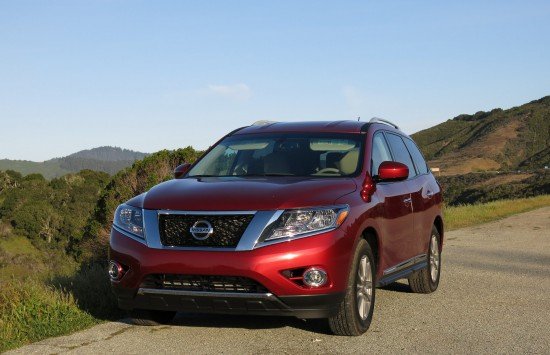
























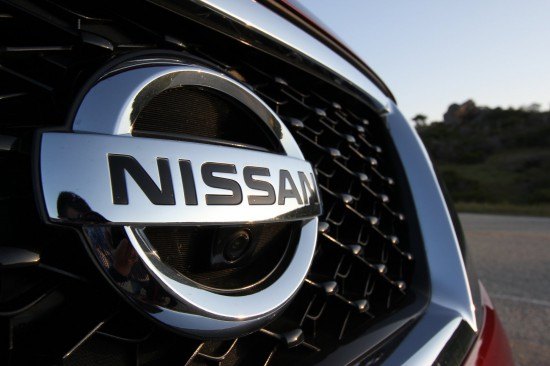




































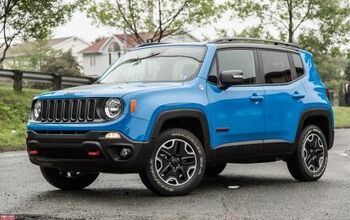

![2015 Ford F-150 Platinum 4×4 3.5L Ecoboost Review [With Video]](https://cdn-fastly.thetruthaboutcars.com/media/2022/07/17/9043901/2015-ford-f-150-platinum-44-3-5l-ecoboost-review-with-video.jpg?size=350x220)
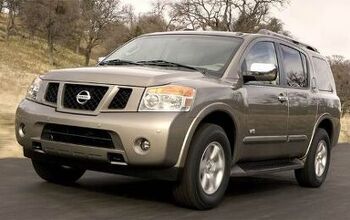
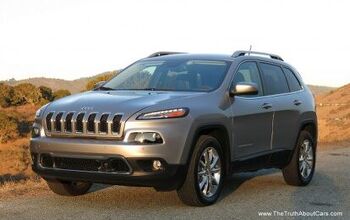










Comments
Join the conversation
No, there is another (read that as Yoda). The Charger which obviously started out RWD, was offered in FWD from MY82-87 as L-body, and is back to RWD as an LX car. "The Charger returned in 1982 as a subcompact hatchback coupe with front-wheel-drive, and a five-speed manual or three-speed automatic transmission. This economy-type model was similar to the Dodge Omni 024, but with a slightly larger engine. The Charger was available with the NA 2.2l SOHC or a turbocharged 2.2l SOHC engine. Both engines could be specified with either transmission. A Shelby Charger was offered starting in 1983, with a turbo version available in 1984 producing 148 horsepower (110 kW) at 5600 rpm and 160 pound-feet (220 N·m) of torque at 3200 rpm. The engine was not intercooled and used a small t3 Garrett turbo. In 1985, the electronics were updated but power output was the same. In 1986, the electronics were further updated." http://en.wikipedia.org/wiki/Dodge_Charger http://en.wikipedia.org/wiki/Dodge_Charger_(L-body)
It looks like there is no QX60 hybrid either. At least I can't find it on the Infiniti website.